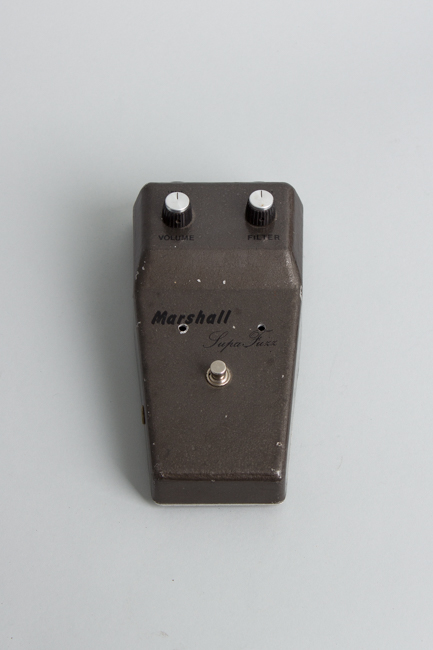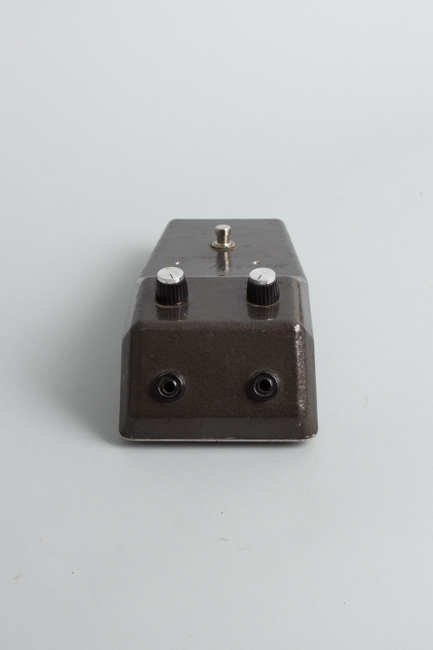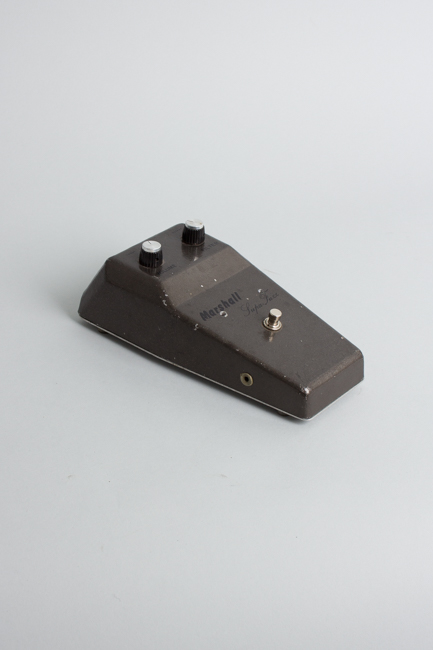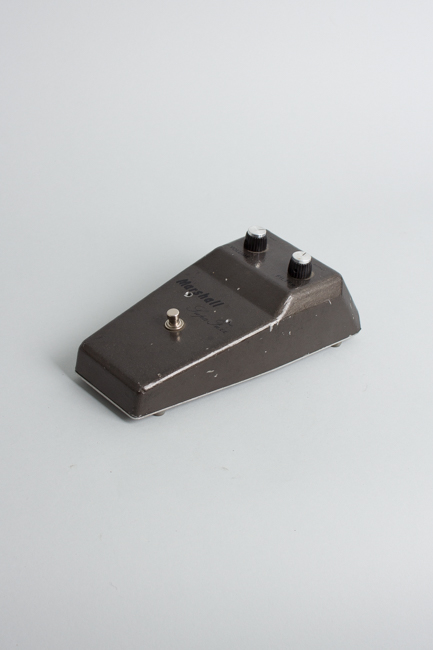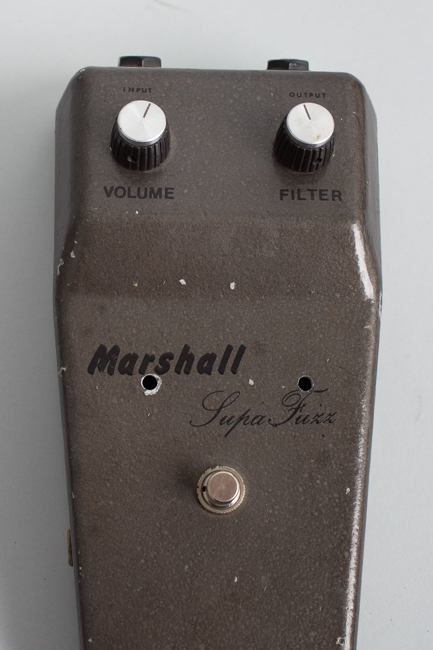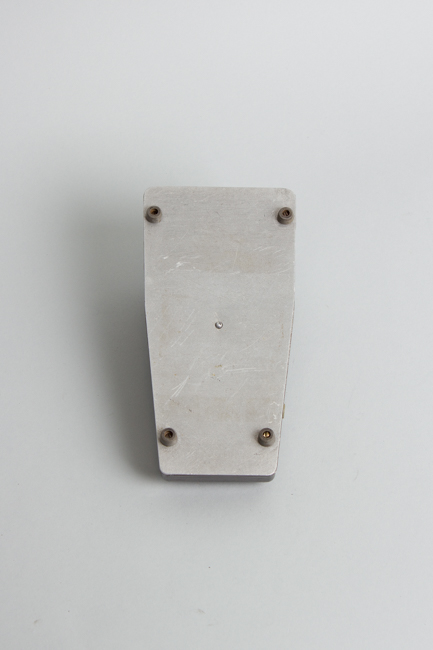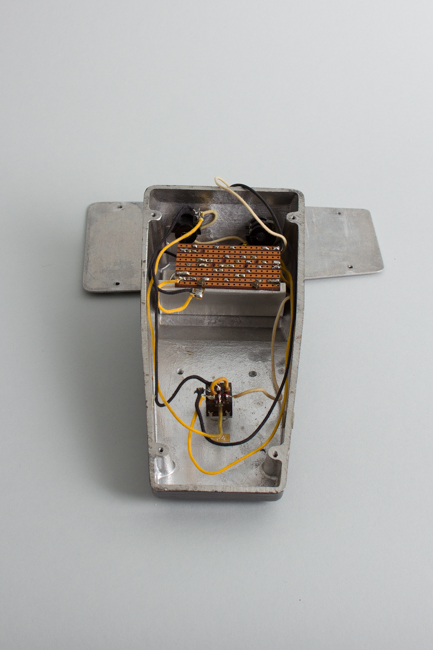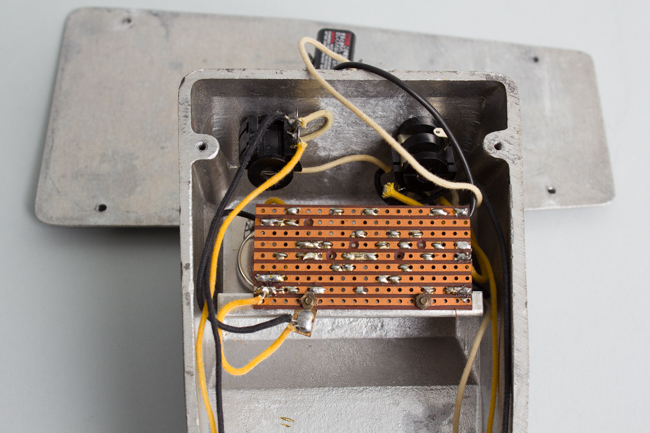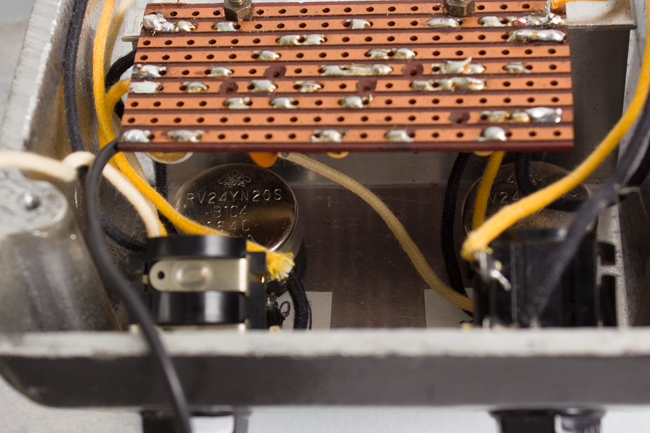Marshall Supa Fuzz Fuzz Effect, c. 1970
This item is currently on hold.
Item # 12016
Prices subject to change without notice.
Marshall Supa Fuzz Model Fuzz Effect, c. 1970, made in London, England.
Few pedals have as much history and beloved presence in rock music history as the Supa Fuzz. Originally build by Sola Sound, these pedals started popping up as early as 1966 with notable artists like Jimi Hendrix and the Yardbirds and by 1967 were a product fully available to the general public. The Supa Fuzz in one iteration or another has been a staple of countless influential guitarists from the aforementioned to Pete Townsend and J. Mascis, and that doesn't even take into account the list of iconic players who used the Tone Benders from which the Supa Fuzz was born.
The tone is simple but effective, just a stomp and two knobs: one for volume, and one labeled "filter" with a more interesting history. The control isn't truly a filter, but rather more of a fuzz control. Early on, the SupaFuzz featured the Tone Bender MKI circuit which featured a fixed, maxed-out fuzz that was controlled by filter. Shortly into production, they switched to the Tone Bender MKII circuit which featured an "attack" control, modulating the intensity of the fuzz. However, Sola Sound did not alter the design and labeling of the controls through the different variations of the Supa Fuzz, including ones Marshall began building under their own name.
By 1968, despite the pedal remaining overwhelmingly the same, Marshall took over the task of manufacturing from Sola Sound. The largest diversion was mostly a different (but reminiscent of the original) and more rounded chassis, some Marshall parts like the knobs, and of course the Marshall branding. The circuit itself was the same, and the tonal characteristics of the pedal were the same as their predecessor, the Tone Bender MKII. There were no further changes in this era to the fundamentals of the circuit, beyond a few more aesthetic changes in until the early 70's and a reconfiguring of the circuit to streamline the assembly of the pedal. These remained in production until approximately 1973.
Length is 9 in. (22.9 cm.), 4 1/2 in. (11.4 cm.) width, and 3 1/2 in. (8.9 cm.) high.
This Supa Fuzz has been restored to originality after a life of heavy use and some modification. There are visibly three non-original holes drilled into the chassis: two on top, one on the side. Most likely, the two holes on top appear to be the right size to have housed a pair of LED lights. The pedal, like many of its time, did not come with a light to signal whether it was on or off, so this is not an uncommon modification done by working players. On the side, we believe this could have been another of the most common utility modifications done to vintage pedals: the addition of an input for a 9V power adapter of some kind since the pedal only runs on 9V battery power.
Several components inside were replaced, likely just worn out or swapped out when the previous owner was adding the LEDs and power options. The pots are contemporary replacements, as are the stomp and the battery snap and much of the wiring inside (though the cable is still quite old cloth-covered wire). The circuit is unmarred. The chassis itself, the jacks, the screws, and the knobs are original, as is the somewhat but not horribly playworn paint. This pedal is not meant behind museum glass, but rather on the stage or studio where the uncompromised tone can do its job. Very Good Condition.
Few pedals have as much history and beloved presence in rock music history as the Supa Fuzz. Originally build by Sola Sound, these pedals started popping up as early as 1966 with notable artists like Jimi Hendrix and the Yardbirds and by 1967 were a product fully available to the general public. The Supa Fuzz in one iteration or another has been a staple of countless influential guitarists from the aforementioned to Pete Townsend and J. Mascis, and that doesn't even take into account the list of iconic players who used the Tone Benders from which the Supa Fuzz was born.
The tone is simple but effective, just a stomp and two knobs: one for volume, and one labeled "filter" with a more interesting history. The control isn't truly a filter, but rather more of a fuzz control. Early on, the SupaFuzz featured the Tone Bender MKI circuit which featured a fixed, maxed-out fuzz that was controlled by filter. Shortly into production, they switched to the Tone Bender MKII circuit which featured an "attack" control, modulating the intensity of the fuzz. However, Sola Sound did not alter the design and labeling of the controls through the different variations of the Supa Fuzz, including ones Marshall began building under their own name.
By 1968, despite the pedal remaining overwhelmingly the same, Marshall took over the task of manufacturing from Sola Sound. The largest diversion was mostly a different (but reminiscent of the original) and more rounded chassis, some Marshall parts like the knobs, and of course the Marshall branding. The circuit itself was the same, and the tonal characteristics of the pedal were the same as their predecessor, the Tone Bender MKII. There were no further changes in this era to the fundamentals of the circuit, beyond a few more aesthetic changes in until the early 70's and a reconfiguring of the circuit to streamline the assembly of the pedal. These remained in production until approximately 1973.
Length is 9 in. (22.9 cm.), 4 1/2 in. (11.4 cm.) width, and 3 1/2 in. (8.9 cm.) high.
This Supa Fuzz has been restored to originality after a life of heavy use and some modification. There are visibly three non-original holes drilled into the chassis: two on top, one on the side. Most likely, the two holes on top appear to be the right size to have housed a pair of LED lights. The pedal, like many of its time, did not come with a light to signal whether it was on or off, so this is not an uncommon modification done by working players. On the side, we believe this could have been another of the most common utility modifications done to vintage pedals: the addition of an input for a 9V power adapter of some kind since the pedal only runs on 9V battery power.
Several components inside were replaced, likely just worn out or swapped out when the previous owner was adding the LEDs and power options. The pots are contemporary replacements, as are the stomp and the battery snap and much of the wiring inside (though the cable is still quite old cloth-covered wire). The circuit is unmarred. The chassis itself, the jacks, the screws, and the knobs are original, as is the somewhat but not horribly playworn paint. This pedal is not meant behind museum glass, but rather on the stage or studio where the uncompromised tone can do its job. Very Good Condition.
